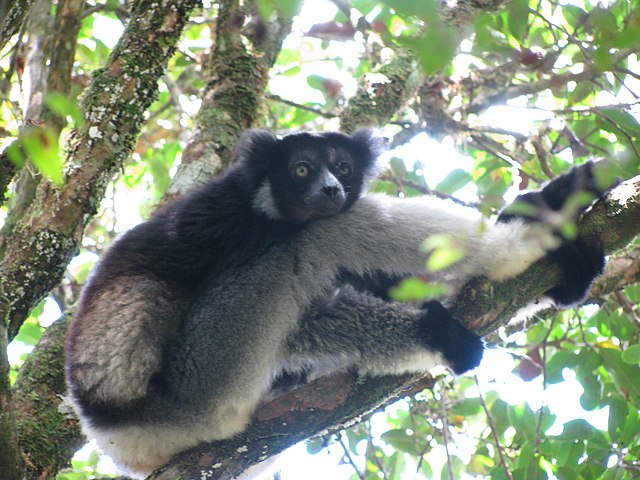The indri, also called the babakoto, is one of the largest living lemurs, with a head-body length of about 64–72 cm and a weight of between 6 and 9.5 kg. It has a black and white coat and maintains an upright posture when climbing or clinging. It is monogamous and lives in small family groups, moving through the canopy, and is herbivorous, feeding mainly on leaves but also seeds, fruits, and flowers. The groups are quite vocal, communicating with other groups by singing, roaring and other vocalisations. Besides humans, it is the only mammal found that can use rhythm.
Indri
Skeleton
In Andasibe-Mantadia National Park
Juvenile
Lemurs are wet-nosed primates of the superfamily Lemuroidea, divided into 8 families and consisting of 15 genera and around 100 existing species. They are endemic to the island of Madagascar. Most existing lemurs are small, have a pointed snout, large eyes, and a long tail. They chiefly live in trees and are active at night.
Lemur
A life restoration of Babakotia radofilai, a sloth lemur that became extinct less than two thousand years ago
Close-up of a ruffed lemur's foot, showing the toilet-claw on the second toe and nails on all other toes
A six-tooth version of the strepsirrhine toothcomb in a ring-tailed lemur, with canine-like premolars behind it







